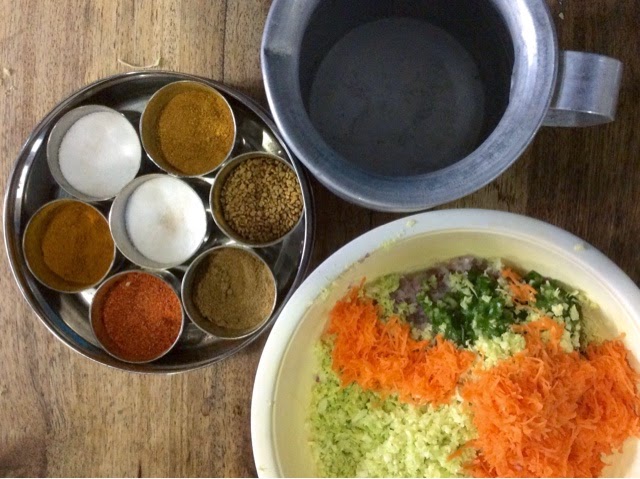KTM is mad. Little alleys. Dark brown eyes. Dusty brick buildings. Little Nepali men wearing their traditional autumnal-coloured hats. Patchouli incense seeps through shop windows lining streets and lungs. Dust. Invariable and multitudinal midget white Suzuki cars, serving the city as its taxi fleet. Marigolds adorn pavement shrines, and Shivas and Buddhas coexist. And spitting. Too much spitting.
Easily our most favourite spot in KTM is the peaceful Garden of Dreams. Perhaps the only oasis from the hubbub and franetic pace of the city, the Garden of Dreams is a green getaway. We spent many a happy afternoon in the sun, reading books, munching picnics, and people-watching. The Garden was originally created in the 1920s, and was one of the most refined gardens of the time in this neck of the woods. Restored and reopened in 2006, it would be interesting to see what nature would have created if she had of been left to her own devices. We saw a flurry of workmen doing everything from watering to weeding the grass with Nepalese tweezers. And what a place of beauty they've recreated.
It'd be neat to add in some aromas and scents into the blog, but a photo of spices will need to suffice. Mini shops, perhaps 1.5m wide are brimming with every kind of colourful spice imaginable, and even more that you can learn about. Whole series of shops sell spices, and they're all in a row. A hundred metres or so down the road you'll find yourself in the button section of the street, with a series of button shops. And so on until your legs get sore and you're a few km's further on. Tape shops, plastic ware, sewing items, paint shops, anything you like!
Mostly life seems all very practical round these ways. But every now and again a touch of thoughtful and pretty delights you. In elegant hotels or restaurants a pot of water with floating flowers and/or candles greets people at the door. When we asked if there was some significance around the floating bouquet we were told it's just to prettify the place. Reason enough!
The Sadhu (holy men) are easily spotted in the streets with their yellow and orange robes, dreadlocked hair, and ancient-looking face paint. They're also easily spotted because they will pick you out in the crowd and bee-line towards you for a photo and a generous donation. You absolutely can't miss 'em!
The Sadhus raise their right hand, and we'd assumed it might be a blessing type practice ... and it's curious cos almost every day one of us says to the other 'we are so blessed/fortunate/lucky.' Glad to have the resources to travel, thankful to have strong legs and bodies, so thankful to have this season of our lives to be free from routine and pass the days however we choose.
Karhmandu has a chalkboard on a street side, with chalk attached for people to write their wishes about KTM. There's been a book published with these boards from around the world, showing people's wishes ... Which can be quite an insight into the lives of others.
Looking through the list, most wished for Kathmandu to be clean of pollution. No one mentioned to have electricity 24/7. Apparently for the last ten years there have been power cuts each day, currently they are four hours long, twice a day. There is a schedule per week, but it interrupts daily life, in ways that are both obvious and obscure. For that reason people carry cash on them, as opposed to using bank cards for purchases.
Don't think we talked about it much at the time, but at altitudes above the tree line the people use dried yaks poop for heating their houses and cooking their/your food. The collection of wood is restricted to preserve the vegetation, so the locals spend time and their bare hands to scoop poop. Village stone walls end up with clumps of poo pressed into them, often with handprints visible in them as they harden in the sun. The photo below shows a lean-to laden with dried yak poo. Yak cheese is also used in cooking, but the taste of yak poo is probably just as appealing!
We did a cooking course actually, with no yaks involved in any way, thankfully! Six of us met in a weeny kitchen to try our hand at making momos. Momos are Nepali dumplings, and are commonly filled with veggies, chicken or buff (buffalo). We made two varieties, mixed veggies as well as a spinach and cheese combo. The mini dumplings can be steamed or fried, and were so yum!
Our Nepali cooking guru friend told us that most Nepali dishes are made from the same spices ... turmeric, chilli, masala spice, pepper, paprika, and our least favourite dried coriander.
The momos were tiddly to make, and even after making 20 of them they still weren't that pretty. After they were steamed they tasted fabulous though!
Watching movies at the Kathmandu International Mountain Film Festival filled our last two days in the city. We watched a couple of documentaries ... about free climbing insanely impossible mountains (rock climbing pitches of hundreds of vertical meters, surrounded by slivers of ice that dropped all the time). And another movie called 'No word for worry' about the Moken sea-gypsys who live off the sea on some very remote Thai islands.
And with those beautiful images still in our minds we boarded a Thai Airways plane, headed for the big smoke of Bangkok. Thanks Nepal - it's been a pleasure!
Bhaktapour/motorbike
traffic wardens with whistles and soldiers with guns
outdoorsy shops, hippy 60's shoes












No comments:
Post a Comment